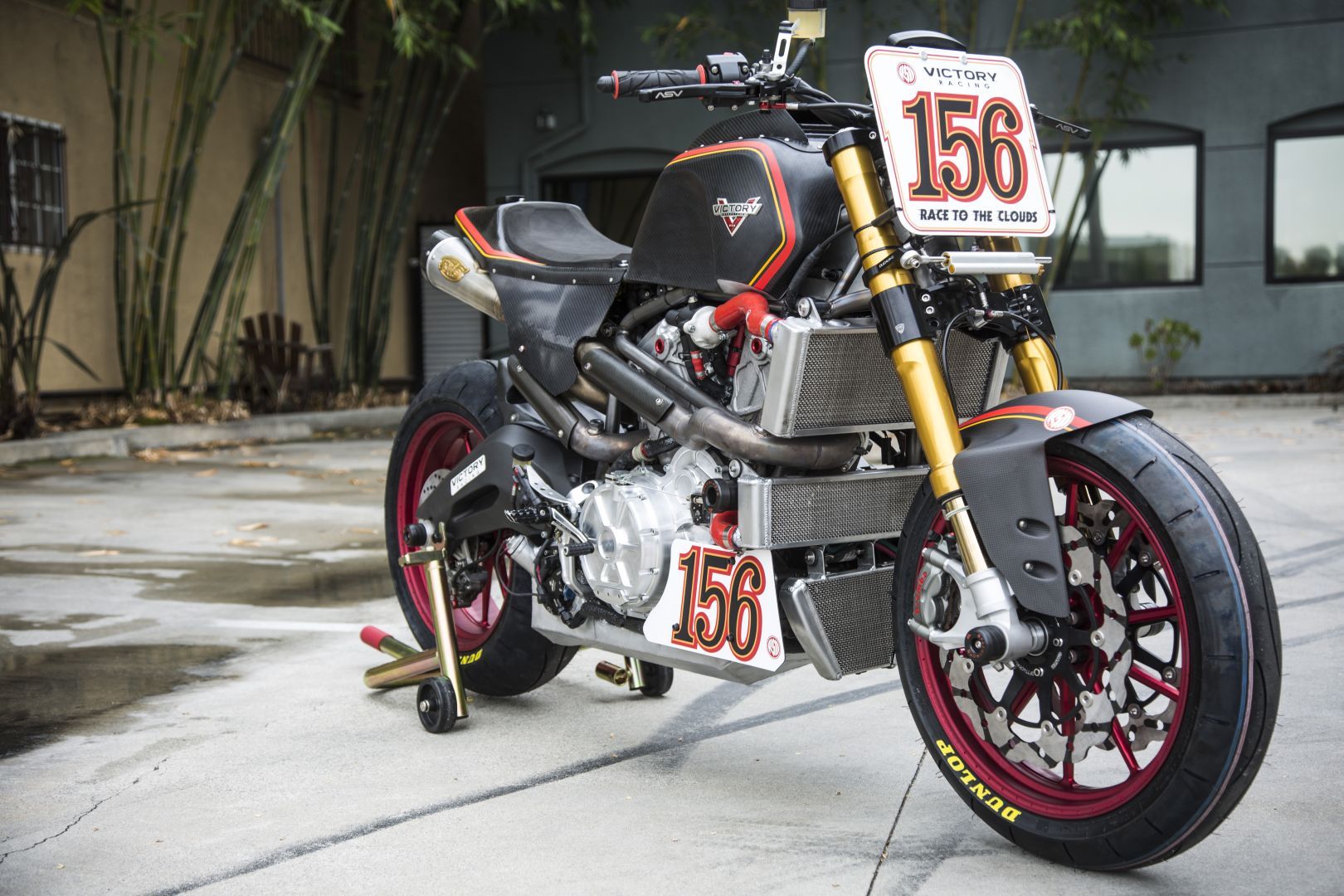Victory Motorcycles->ke1801 has officially pulled the covers off of the Project 156 race bike, revealing what many of us have already believed from the very beginning. Project 156 is a real work of art, meticulously built from the ground up by Victory and Roland Sands Design.
What we still don’t know is the bike’s tech specs, including its power output. I’m guessing Victory is continuing its trend of slowly dropping information about the bike as we get closer and closer to the 2015 Pikes Peak International Hill Climb->ke1001 on June 28, 2015.
In any case, the latest reveal shows Project 156 in all its physical glory. From what I can see, the hype surrounding the bike has been more than justified. It looks like a bonafide racer, which is really what it’s initial purpose is supposed to be. The absence of a lot of aesthetic components lends itself to the belief that the bike is lighter than most bikes Victory has in its lineup these days. The small presence of carbon fiber bodywork components also points towards a more svelte appearance than what we’re used to.
You would think that Victory would go crazy with the carbon fiber components, but upon closer examination, you’ll notice that the company, presumably at the behest of Roland Sands Design, was judicial in distributing the lightweight material, opting only to use it on the tank and airbox cover, side panels and the tail section.
Every other component of the bike, particularly the tubular frame, the engine, and the three radiator units can be clearly seen, even at first glance.
I’m not necessarily a fan of the bike’s color scheme (are those magenta wheel rims?), but since Victory Motorcycles is using Project 156 for the specific purpose of racing it up the Race to the Clouds, I suppose it could go wild with the flashiness without turning off would-be customers.
Overall, Project 156 still looks like an incredible book. It’s too bad that we’re still being kept in the dark on how much power it can generate, but knowing that Victory is developing a proprietary new liquid-cooled Victory engine for the bike makes me optimistic that none of us will be disappointed when the power numbers are finally released.
Continue reading to read more about Victory Motorcycles’ Project 156 race bike.
Why it matters
By now, a lot of us have read about why Victory Motorcycles is putting a lot of work into building the Project 156 race bike as it attempts to conquer the Pikes Peak International Hill Climb. For those who still don’t know, though, the name “Project 156” was derived from the 156 turns of the Pikes Peak track where the bike will be competing in.
Anyway, I’m a big fan on how Victory Motorcycles and Roland Sands Design created a design that’s unique in its own right while also retaining some of the performance functions of its components.
For instance, the bike comes with a pair of 67mm throttle bodies with downdraft intake funnels that extends well into the area where the gas tank can normally be found. It’s an interesting about-face from a traditional configuration of a race bike, but from an aesthetic point-of-view, the shifting components translate well to the eyes. As far as the fuel tank is concerned, look a little closer and you’ll notice that it’s actually tucked neatly underneath the engine while a small filler neck and an adjacent fuel pump can also be found south of the swingarm pivot point. Again, another interesting design interpretation that could very well find itself in other Victory motorcycles in the future if the stars align as they should.
Other notable technical components include suspension bits sourced from Ohlins, tires provided by Dunlop, and M50 caliber brakes courtesy of Brembo.
As much digging as we can do of these photos, the most important detail about Project 156 is still being kept under wraps. Let’s all hope that Victory Motorcycles doesn’t take too long before releasing more information about Project 156.
The Race to the Clouds, after all, is less than four weeks away.

